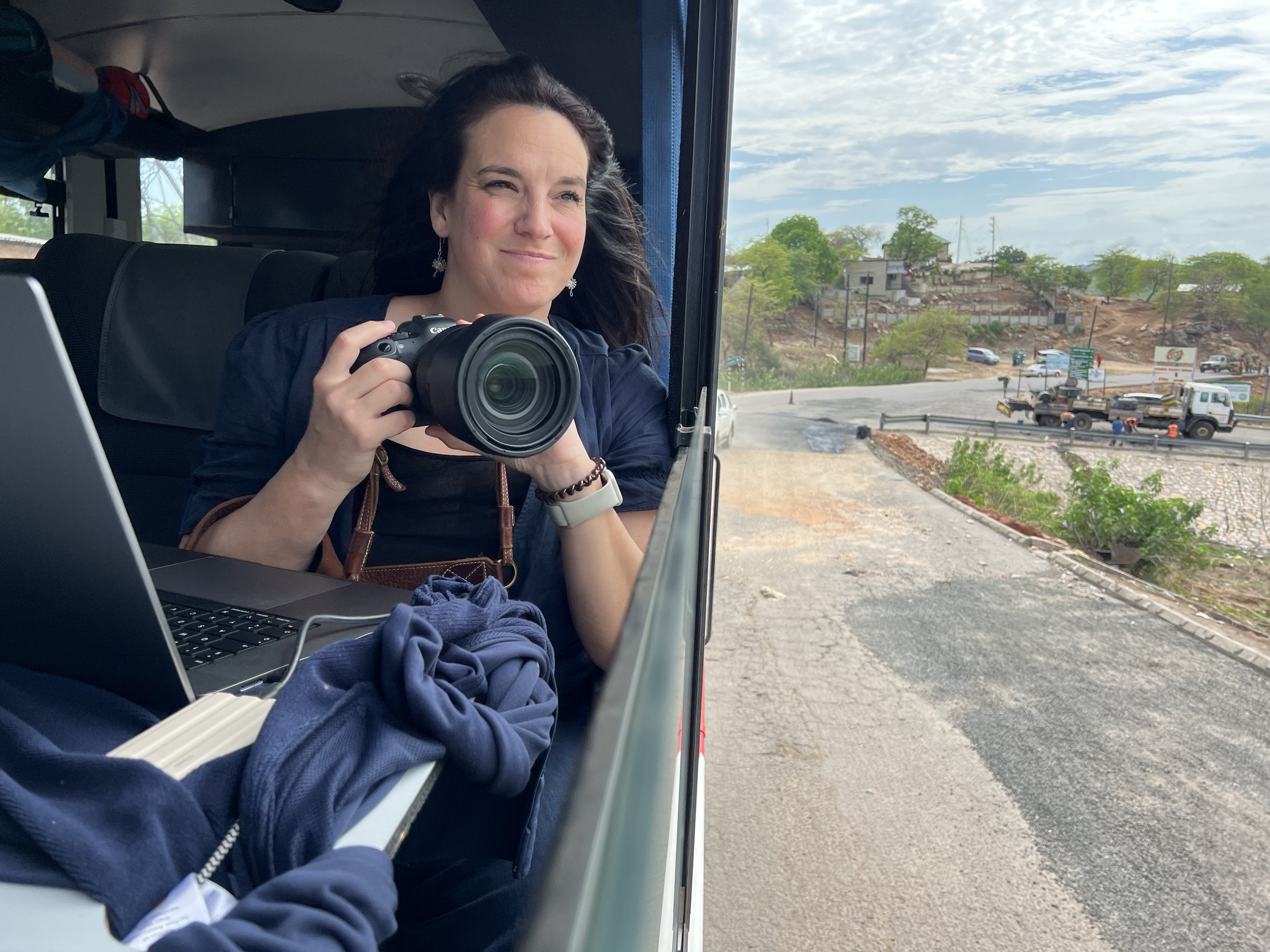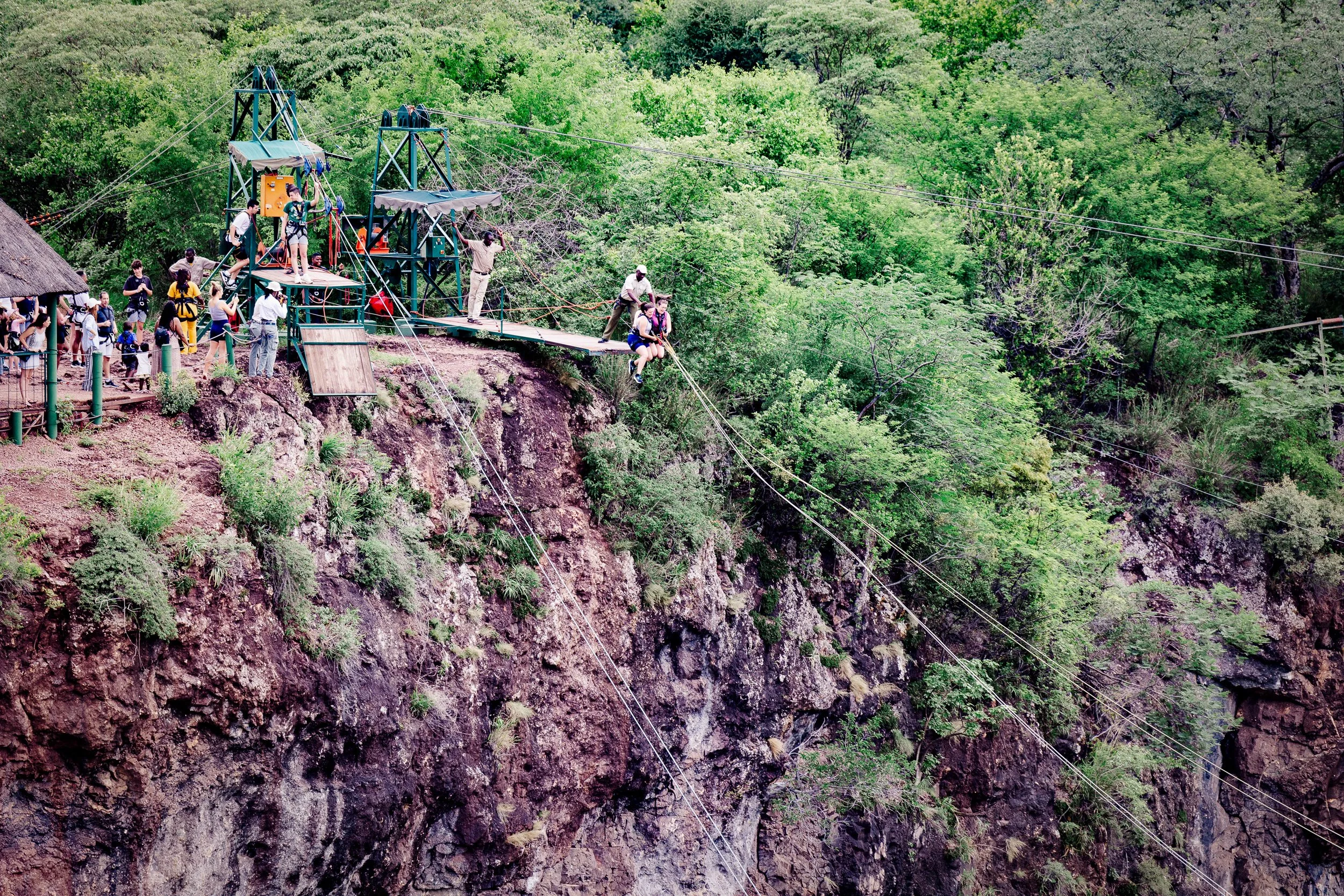Zimbabwe
“It’s Christmas Eve and I’m very drunk” tells me another customer stumbling around the bottle shop in Harare, “but I just wanna say you are very welcome in Zimbabwe!”. I’m trying to buy some booze for Christmas and it’s not going so well. I want to try the local Zambezi beer but you need to bring back an empty to get a full bottle as the bottle shop is low on returns. Our guide has warned us that tonight’s stay will be very basic and has no bar “the old place we stayed, shutdown during Covid, and this is the only place we have found so far”. Another customer kindly returned his bottle of beer he has just purchased and says he will go home and get some empties so that I can buy one. I also buy a few of the last remaining Windhoek beers that don’t need a return.
There’s a lot of Zimbabwe that reminds me of parts of the UK, like an old trading estate on the outskirts of Leicester, 70’s style bungalows, mixed with the occasional thatched brick roundhouse. Twenty years ago Mugabe’s botched plan to return white owned farms to black communities (or to Mugabe and friends) left its economy in ruin. Zimbabwe, once the breadbasket of Africa, suffered from starvation and hyperinflation. It’s currency has largely been abandoned, everything we buy is in US Dollars, small notes are prized as there is rarely any change, sweets can be used to make up for the cents change. I had loaned another couple a nice mix of banknotes in USD a few days ago and they return after a trip to the ATM in Harare with two, crisp, but largely useless, 100 dollar bills.














The campsite south of Harare is terrible but has good wifi, which perhaps makes up for the lack of running water. We had decided to try upgrading to a room here, but on closer inspection it stunk and you couldn’t leave the window open without batting off large flying insects. We negotiate a refund and put up our tent. Martina calls home for Swiss Christmas, I donate a Windhoek beer to another Swiss whom didn’t manage to buy any drinks, and open my Zambezi beer. It’s crisp and strong but I’m already ready for bed, no need for the other beer. The tent is cool and we both sleep well.
It’s a six hour drive on Christmas Day to the great ruins of Zimbabwe. The stone walled ruins are up a steep slope to a vantage point over the flatlands below and was home to a king around 800 years ago who had some 200 wives. Our guide Never tells us how the country is named after the site as Zimbabwe translates to Big Stone House in one of the local languages. He says that if you haven’t visited these ruins then you have haven’t really been to Zimbabwe.
As the drunk man said in Harare, we are very welcome and also a bit of a curiosity. Families, dressed up for Christmas, visiting the ruins take sneaky photos of the white tourists. I have to drag Martina away from doing a full family photoshoot in the stone walled ruins back to the truck, as there’s a Christmas bbq at campsite for dinner tonight. It Ozzy rules secret Santa, which means that we each take turns to take a gift from the table or steal someone else’s. I pick and manage to hang on to a nice woven bag, whilst a bright blue pair of flip flops are stolen to the maximum two times.
















Bulawayo has a certain charm to it, there’s a funfair on in the city’s town square, though a lot of places are closed for Boxing Day. The city’s Victorian style buildings echo a bygone era, some still stand proud while others fall slowly into disrepair. The Cairo to Cape Town restaurant on the corner displays the miles to go, 1150, though our route will certainly be longer.
There is an optional trip to walk with a guide and track rhinos in Matobo Park. It is expensive, but comes in at exactly two hundred dollars.


















Each group of rhinos are protected by two rangers with a shoot to kill policy for any unauthorised person within the park. The guide, Mbex, hears the whistles of two who wave our transport over. We continue on foot, walking in single file and close in carefully to a few metres away from the rhino family. The bull stands briefly, to check out the visitors, and then relaxes to allow us to come closer and take photos. The rhinos here are dehorned regularly to reduce poaching, there are around ninety within the park of a mixture of black and white rhinos. These three are white rhinos which are more sedate than their black cousins. “Whatever happens, don’t run” Mbex tells us, “you will just die tired.” The family are dozing peacefully as we take in the scene, the calf nuzzles her mother for milk before rolling back over to sleep as we leave them in peace. I tip the rangers and bid them farewell as we head off through the rainy drizzle to explore the rest of the national park.
Mbex is also giving us a history lesson and the background of the San people who once lived here before they were driven out by the Ndebele people. There is a long history of conquest in this area as different groups fought for control over the lands wealth. The most famous of all is Cecil John Rhoads, who chose to be buried here at the top of a rocky outcrop known as Worlds View. The San people left their paintings in caves here featuring animals they lived with and hunted including the extinct zebra like Quagga We will see more of the San people who are famous for their click language later in our travels. I plan to ask them to pronounce “Chochichästli”.
Over lunch Mbex tells of the process of negotiating a dowry for getting married. A dowry is a sum measured in cattle to be paid to the wife’s family over years, to be negotiated by the new husband’s two aunts. It’s a formal arrangement with protocol. Come dressed nicely, but not too flashy, for 11 at the house with his negotiators. He was greeted by a child and asked to wait outside for a hour while the party went on inside. Once allowed in he had to sit on the floor and remain silent. Twenty girls are presented and the negotiators have to identify the correct one, the others are then dismissed, and then comes the bargaining. The family then explain why this girl is so valuable and important and they expect a lot of cattle in return for her marriage, the negotiators have to agree on a fair deal. He explains it’s a way of bonding the families together for a long future, he still has the value of four of the negotiated thirteen cattle to pay. The Ndebele king who lived here had over three hundred wives spread across the nation, that’s a lot of cattle to pay, I think.
























Our final stop in Zimbabwe is the tourist town of Victoria Falls, the falls being defined one of the seven natural wonders of the world. It’s certainly impressive, the Zambezi river pours like an overfilled bath tub to the gorge floor below. The walk along the Zimbabwe side has various lookouts to different parts of the wide falls, from thundering torrents to wide curtain falls, the view often obscured by spray from the maelstrom crashing below.
I don’t think I would know anyone who would buy a helicopter flight from a dodgy bloke in the street but that doesn’t seem to deter the touts trying to sell activities and billion dollar notes. There’s lots of activities here and although we are both too old to bungee jump from a bridge we enjoy watching the terrified tourists given a helpful shove off the platform into the gorge below. There’s a VIP being interviewed on camera at the Lookout Cafe and they are momentarily paused by screams as a couple plunge down into the gorge by a rope swing.
We’re heading next across the old bridge into Botswana and celebrate New Year’s Eve a short drive away in Chobe.






















